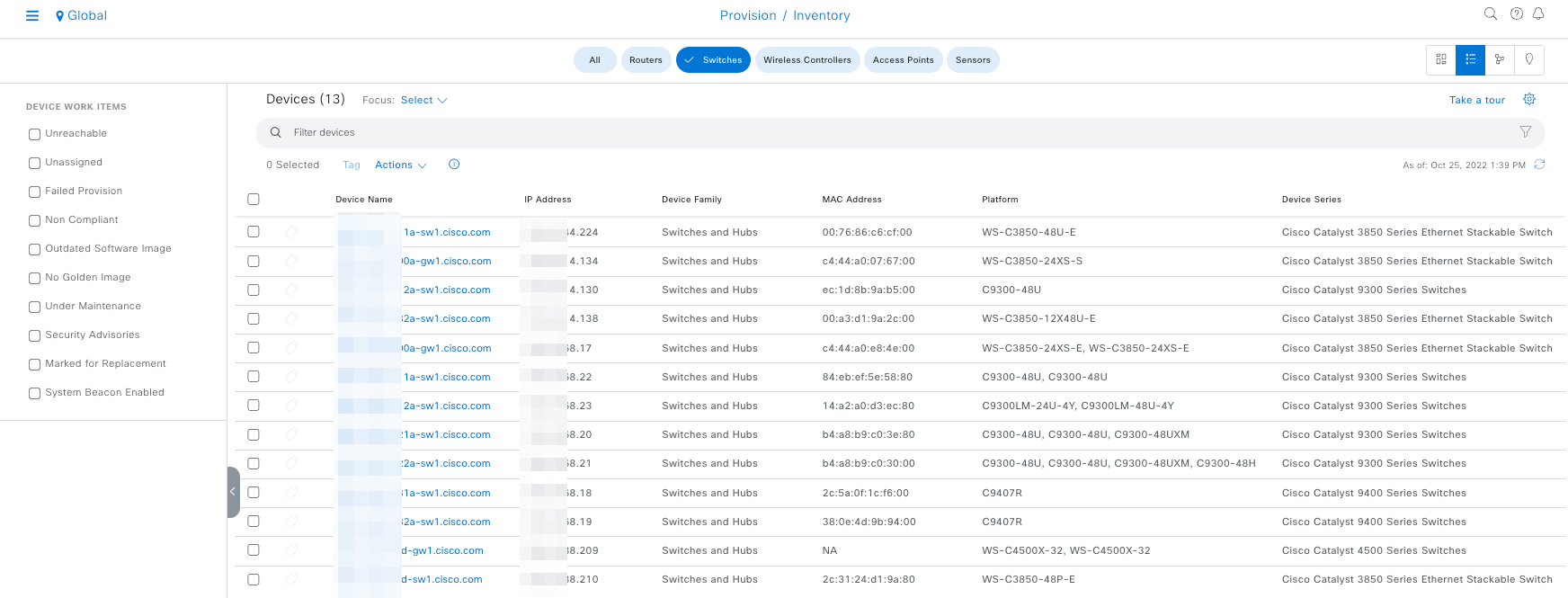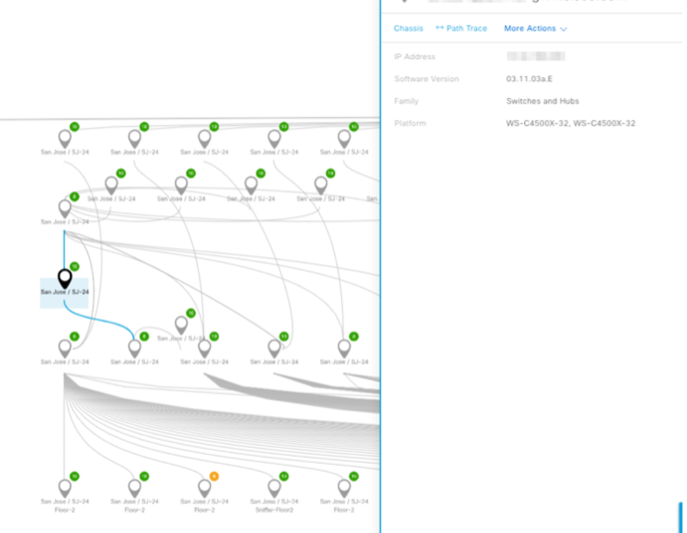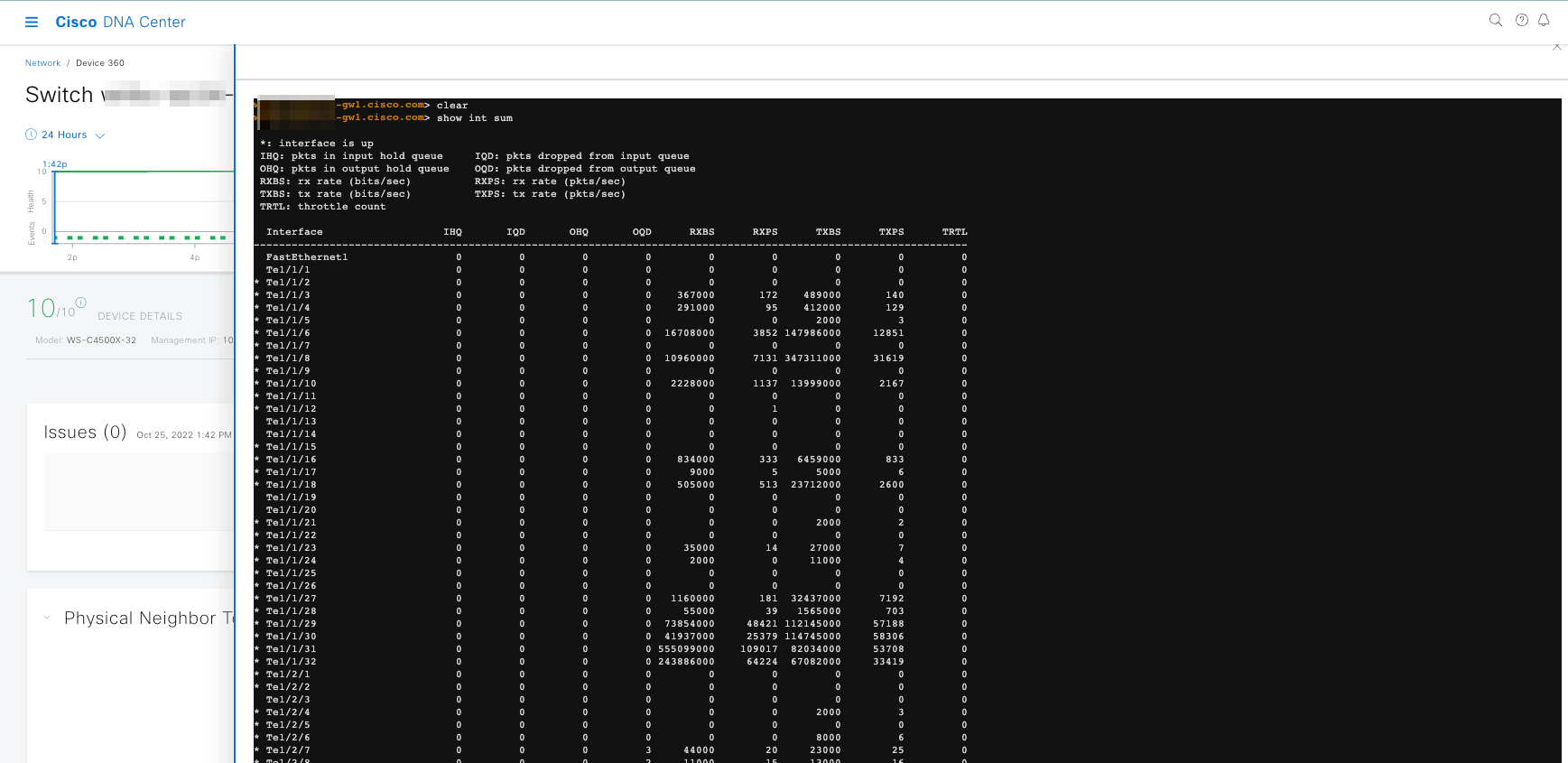It is a well-established fact that Cisco builds amazing hardware which is reliable and built to last. Perhaps one of the best testimonials of Cisco’s quality is the sheer amount of “legacy” devices still in production across the globe. In fact, it is not uncommon to see devices with uptime of over a decade. While many networking professionals are very proud of the uptime, this is part of the reality of some network infrastructures. Let’s define what a legacy device is:
leg·a·cy (adjective)
“denoting or relating to software or hardware that has been superseded but is difficult to replace because of its wide use.”
Cisco has developed Cisco DNA Center as the next-generation platform, which provides not only network management and monitoring but is also feature-rich with advanced AIOps, automation, and security capabilities. However, it is also important to note that Cisco DNA Center can support and bring the latest and greatest in Cisco’s monitoring and management capabilities to many of your legacy devices, not just the newest Cisco Catalyst 9000 product family.
With the most recent release, Cisco DNA Center now supports all devices up to 2015 (541 legacy devices). Note that the legacy device support in Cisco DNA Center does not imply the EOL devices are now TAC supported; if the device has reached its end of support, that is still the case.
For a complete list of compatible legacy devices, see our
Cisco Prime Legacy Device Compatibility Matrix
Cisco customers can easily move from Prime Infrastructure to Cisco DNA Center with their SNMP-based legacy devices and be able to consolidate their monitoring tools to an advanced platform without having to leave their legacy devices behind.
Emphasis on Tool Consolidation
With Cisco’s commitment to helping our customers streamline and optimize their IT operations. In coming releases of Cisco DNA Center, Cisco will be incorporating MIB2 support, which will not only allow additional legacy Cisco device support but also enable monitoring of many 3rd party non-Cisco devices using Cisco DNA Center. This functionality will enable IT organizations to consolidate their monitoring platforms, as many IT organizations are struggling with the number of tools, the fragmentation between the different tools, and the “islands” of support.
What functionality is available on Cisco DNA Center for legacy devices?
Given that the legacy devices are limited to the SNMP protocol and CLI interfaces, Cisco DNA Center provides a range of capabilities given the capability of the target platform, there for some of the capabilities are limited, unlike the full capabilities of the modern Cisco Catalyst 9000 device family. Below is a list of functionalities available for legacy devices:
- Inventory – Legacy devices will appear in inventory which means they will generate some level of alerts and issues as provided by the SNMP protocol.
- Topology – Inventory devices, once placed in the hierarchy, will also appear on the topology view within Cisco DNA Center.
- SWIM (Software Image Management) – With end-of-life devices, software for many of the legacy devices is no longer updated, but Cisco DNA Center will provide limited SWIM functionality to many legacy devices for image management.
- Change config audit (CCA) – Limited support is provided for many devices with Configuration backup and config change audit functionality.
- Template Provisioning is available for select Nexus and Legacy Catalyst, which meet the minimum device software.
What is the Cisco DNA Center licensing requirement for legacy devices?
For legacy device support, please contact your partner or Cisco sales representative.
From Prime Infrastructure to Cisco DNA Center
With legacy device support going back to all devices since 2015, moving from Prime to DNA Center is easier than ever, allowing your organization to consolidate tools with legacy device monitoring and leverage all the advanced features with your newer Cisco Catalyst 9000 device family using Cisco DNA Center.
By adding legacy devices to Cisco DNA Center, customers can now leverage the following capabilities:

- Consolidate their monitoring tools with both new and old equipment

- Leverage Cisco DNA Center’s monitoring and alerting system
- Be able to see legacy equipment on DNA topology maps

- Ability to see legacy device health with DNA Center health score

- Detailed device view with Device 360 with details of device information, device neighbor-ship, event viewer, and interface details.

- Ability to run CLI commands on switch from DNAC
Cisco understands that many of our customers still have legacy devices and that in large networks, refreshes can take time to complete, but it does not mean that your organization can not start benefiting from Cisco DNA Center today. If you have a current version of Cisco DNA Center, you already have all you need. Now, you simply need to add your legacy devices to Cisco DNA Center!
For additional resources and information, visit
Cisco DNA Center
Additional Resources:
Learn More about Prime to Cisco DNA center migration
Cisco dCloud to experience and demo Cisco DNA Center via your Cisco log-in credentials
Cisco DNA Center Communities to connect with your peers and Cisco specialists


Legacy at the box level to go along with legacy at the network layer (IPv4). Great to see Cisco adding this level of support into DNAC
Great and informative review
Its great that Cisco has added this level of support for legacy devices.
Wow!! I had no idea this existed. Meeting the customer where they are, that is what I see Cisco doing.
thankfully Cisco still looks after the legacy stuff and layers, well done in adding this portion as well
Interesting blog, our organization will install Cisco DNA within the next year. I’ve been using Prime Infrastructure for so long!!
Already With DNAC and inserting old Switch into the system.
It’s great that Cisco is adding legacy device support to DNA Center. This greatly improves the cost to benefit ratio of the product.